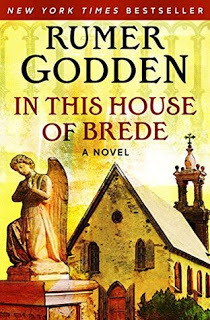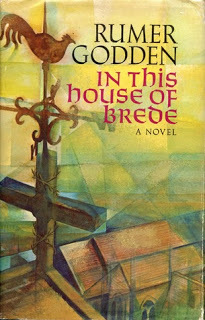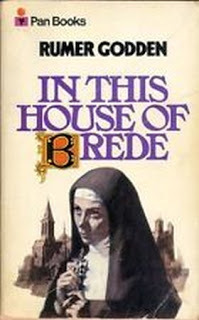The REAL Benedict option
 In This House of Brede by Rumer Godden
In This House of Brede by Rumer GoddenMy rating: 5 of 5 stars
When I started reading this book, I did not expect it to be so good. But when bookshops and libraries were closed during the Covid lockdown I began making a list of books on our shelves that I had not read. I don't even know how this one got there -- I think it may have been one I inherited when my mother died. Bit I had no hesitation in giving it five stars.
 It's about a fictitious Benedictine monastery in England, and gives what seems to me a remarkably accurate picture of Christian monastic life. I knew some things about Benedictines. I knew a few people who had entered Benedictine monasteries, but found the monastic life wasn't for them. I have even visited the female Benedictine monastery at Inkamana near Vryheid in KZN, and a male one at Egmont in the Netherlands. I knew that male Benedictine monks were addressed as "Dom". But I did not know that professed female Benedictines were addressed as "Dame". nor that they had "claustral" sisters. That I learnt from this book.
It's about a fictitious Benedictine monastery in England, and gives what seems to me a remarkably accurate picture of Christian monastic life. I knew some things about Benedictines. I knew a few people who had entered Benedictine monasteries, but found the monastic life wasn't for them. I have even visited the female Benedictine monastery at Inkamana near Vryheid in KZN, and a male one at Egmont in the Netherlands. I knew that male Benedictine monks were addressed as "Dom". But I did not know that professed female Benedictines were addressed as "Dame". nor that they had "claustral" sisters. That I learnt from this book.In spite of its informativeness, however, it is not simply an "info dump" (that bane of would-be fiction writers), but it is a human story, and the characters stand out as real human beings.
It also brings out clearly how the monastic life, though more intense, is not essentially different from the Christian life in general. One scene that brought this out particularly strongly was when a novice nun receives letters from a man who had been in love with her for a long time. He addressed her by her secular name, pleading with her to leave the monastery, abandon the monastic life and marry him. She would not reply to his letters, saying she would only do so if he addressed her by her monastic name, thus acknowledging her decision and her right to make it. She asked the Abbess if that was not right. "It's right," said the Abbess, "but is it kind?"

That reminded me of the saying, quite commonly uttered in the time that the story is set (the 1950s and 1960s), that it is better to do wrong for the sake of love than to insist on doing right because of my lack of it.
There is sometimes a perception that it is easier to be a Christian in a monastery, because one is protected from the temptations of the world, but this book does nothing to promote that view. Orthodox monastics I have known have often spoken of the monastic life as "my repentance", and that is more its distinguishing feature. In the monastic life it is no easier than anywhere else to become perfect. It is, however, easier to become aware of one's imperfections.
Western monasticism, or perhaps one should rather say "religious life", differs from Orthodox monasticism in having many different forms. There are monks, sisters, canons regular, mendicant friars and a whole lot of others.
 By contrast, Orthodox monasteries all work more or less on the same lines. Most, however, seem to agree that Benedictines are monks, and they seem to be the closest to Orthodox monasticism. It is therefore rather strange to see Orthodox Christians advocating something called the Benedict option when it is very un-Benedictine. If you are Orthodox, please read this book to understand what the Benedict option really means. And it might also give some insight5 into Orthodox monasticism too, though I would be interested in hearing the views of Orthodox monastics who have read this book.
By contrast, Orthodox monasteries all work more or less on the same lines. Most, however, seem to agree that Benedictines are monks, and they seem to be the closest to Orthodox monasticism. It is therefore rather strange to see Orthodox Christians advocating something called the Benedict option when it is very un-Benedictine. If you are Orthodox, please read this book to understand what the Benedict option really means. And it might also give some insight5 into Orthodox monasticism too, though I would be interested in hearing the views of Orthodox monastics who have read this book. View all my reviews



